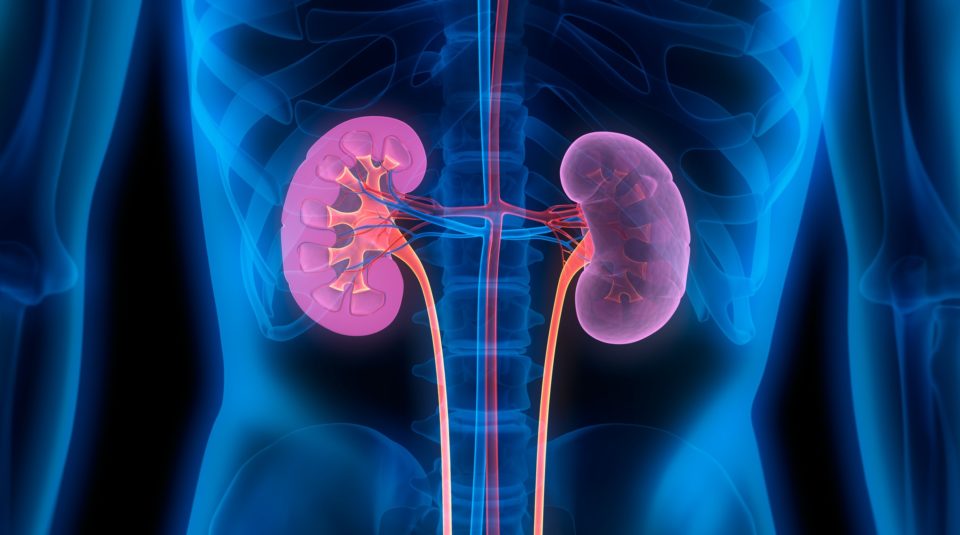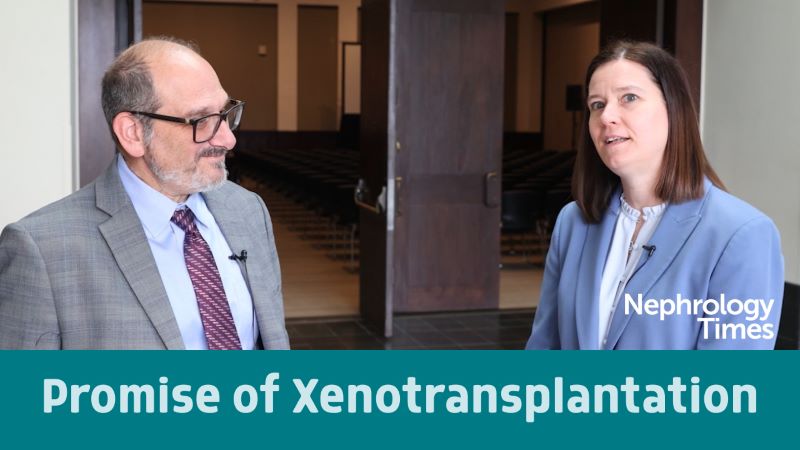
Worldwide, approximately 0.1% of the population is affected by kidney failure with a need for renal replacement therapy. According to statistics from the National Kidney Foundation, more than 2 million people globally receive chronic dialysis treatment or are living with a functional kidney transplant. Patients with kidney failure experience reduced quality of life, increases in psychosocial problems, and difficulties in maintaining normal employment, due, in part, to time-consuming dialysis treatments.
In recent decades, there have been improvements in replacement therapy in kidney failure such as modalities with automated peritoneal dialysis and home hemodialysis. Further, the number of kidney transplants is increasing as is the survival rate following transplantation.
However, results of studies have demonstrated that many patients with kidney failure remain unemployed. Previous studies have reported rates of employment and predictors of employment during dialysis or after kidney transplantation; the results have never been summarized in a systematic review of patients with kidney failure receiving dialysis or having a kidney transplant.
Lilli Kirkeskov, MD, and colleagues in Denmark and Norway conducted a systematic review and meta-analysis to establish the rate of employment before and after initiation of dialysis and kidney transplantation. The researchers also sought to identify predictors of employment during dialysis and post-transplant. Results were reported online in BMC Nephrology [doi.org/10.1186/s12882-021-02552-2].
The literature search included the period from January 1966 to August 2020. The researchers searched the PubMed, Embase, and Cochrane Library databases for articles in English. The search terms used were (chronic kidney disease OR chronic renal disease OR kidney transplant OR renal transplant OR dialysis OR hemodialysis OR peritoneal dialysis) AND (unemployment OR work ability OR disability pension). Data on employment rate, study population, age, sex, educational level, duration of dialysis, kidney donor, ethnicity, dialysis modality, waiting time for transplantation, diabetes, and depression were extracted.
A total of 2310 references addressing kidney failure and employment were identified. Based on titles, 133 studies were potentially relevant for evaluation; of those, 58 met inclusion criteria. Twenty-seven of the 58 studies described employment in kidney failure patients during dialysis, 25 addressed employment post-transplant, and six addressed both dialysis and kidney transplantation. The final analysis included 33 studies regarding dialysis and 31 regarding kidney transplantation, representing 162,059 and 137,742 participants, respectively. The studies were published from 1981 to 2020 (median: 2013), and most (81%) were cross-sectional and analyzed data at a specific point in time. The cross-sectional studies were small to medium sized; the cohort studies were mainly larger population studies. More than half of the studies were single center and were mainly from high-income countries.
The average age of patients on dialysis was 52.6 years and the average age of the kidney transplant recipients was 46.7 years. More than half of both groups were male: 60.3% and 59.8%, respectively.
The weighted mean for the employment rate during dialysis was 26.3%. In the 16 studies that excluded patients ≥65 years of age, the weighted mean employment rate was 21.6%. The United States generally appeared to have a lower employment rate among patients on dialysis. Removing studies conducted in the United States from the analysis resulted in a weighted mean of 44.4% compared with 24.8% in the United States. In 23 cross-sectional studies, the employment rate was 24.9%; in the three cohort studies, the employment rate was 51.7%.
In general, after the initiation of dialysis, the employment rate dropped. Nine studies included data before and after dialysis initiation; in those studies, the employment rate decreased by 16.4% (weighted mean) (range: 5.2% to 58.5% within and between countries). Overall, the employment rate was higher in patients receiving peritoneal dialysis compared with patients on hemodialysis (58.8% vs 39.5%).
The pre-transplant employment rate was 36.9% (weighted mean), ranging from 25% to 86% between continents. Post-transplant, the employment rate was 38.2% (weighted mean, all studies), ranging between 14.2% and 85% within and between continents. When including only the 18 studies that excluded patients ≥65 years of age, the employment rate was 34.4%.
Both pre- and post-transplant data were available in 14 studies: the change in the employment rate from pre- to post-transplant ranged from a decrease of 30% to an increase of 3.5%. The employment rate was assessed at 1 year post-transplant in most studies. One study assessed employment rates (full-time work) 1 and 5 years post-transplant (38.1% and 35.6%, respectively).
Twelve studies included information on normative comparison data to use for meta-analysis of predictors for employment during dialysis, but only for some of the predictors (dialysis modality (peritoneal dialysis vs hemodialysis), diabetes versus being without diabetes, educational level (more than high school vs high school or less), sex, and age. Predictors for employment during dialysis were not having diabetes, educational level greater than high school, peritoneal dialysis, and male sex. Young age was also a predictor for employment.
Fifteen studies that included post-transplant employment rates also had information on normative comparison data to use for meta-analysis for employment post-transplant. The predictors for post-transplant employment with low heterogeneity were having a living donor, educational level more than high school, peritoneal dialysis, male sex, younger age, being White, waiting time for transplantation, and depression. Predictors with moderate heterogeneity were pre-transplant employment, being without diabetes, and shorter time in dialysis.
Limitations to the study included the lack of a control group in nearly all of the studies, the cross-sectional design of the majority of the studies, and lack of all relevant risk factors for unemployment.
In conclusion, the authors said, “Kidney failure patients have a low employment rate during dialysis and pre- and post-transplant. Predialysis employment, a higher education, not having diabetes or depression, being younger, male or White, receiving a living donor kidney, and a short waiting time before transplantation were all predictors for post-transplant employment. It is important to support kidney failure patients through a combination of clinical and social measures to ensure that they remain in work.”
Takeaway Points
- Patients with kidney failure, either on dialysis or recipient of a kidney transplant, face difficulties maintaining employment.
- Results of a systematic review and meta-analysis revealed low rates of employment for patients on dialysis and for kidney transplant recipients.
- Predictors for employment in both groups included younger age, being without diabetes, use of peritoneal dialysis, transplantation with a living donor kidney, and higher education level.







 © 2025 Mashup Media, LLC, a Formedics Property. All Rights Reserved.
© 2025 Mashup Media, LLC, a Formedics Property. All Rights Reserved.